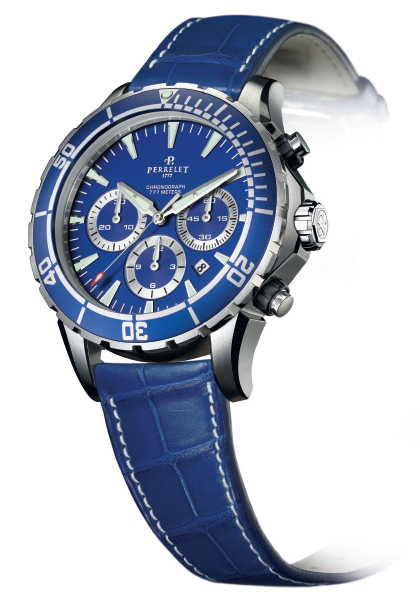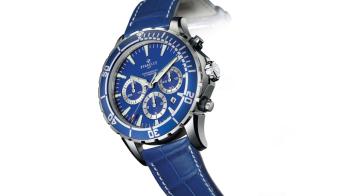Whether Abraham-Louis Perrelet was the inventor of the rotor in 1777, and thus of the automatic watch, is a longstanding bone of contention among experts: some hold that it was actually Sarton, while others even think it was Breguet. History will no doubt eventually give us the definitive answer, and we can probably leave the discussion there for now. ‘Now’ in this case being our examination of the eponymous Perrelet brand. Based in Bienne, it continues to defend its claim to be the legitimate heir to the automatic watch invented by its amazing founder. With this in mind, the firm has built its reputation around watches which, without exception, feature a swiftly-turning rotor on the dial side. Without exception? Well, nearly
In 2011 an unidentified horological object appeared: the Seacraft. It lacked the rotor on the dial side, even if it did have an automatic movement inside. Not only that, it was a dive watch — a first for Perrelet. And to cap it all, rather than just an isolated piece, a whole Seacraft collection was unveiled. Right from the outset, the collection featured a three-handed watch, a GMT version and a chronograph.

A rare combination of chronograph and dive watch
The chronograph is what deserves attention here. It’s not often you find this complication on a dive watch, and there are for two reasons for that. The first is that chronographs generally can’t be used underwater — not only in this instance, but also on any other watch destined for the depths, because activating the pushers runs the risk of compromising the case’s overall watertightness.
What’s more, dive times are calculated solely by rotating the bezel — and the Seacraft’s bezel is one of the most accurate. Rather than the 60 statutory increments required by the ISO 6425 standard, it has twice the number: 120 of them, allowing passing time to be broken down into 30-second segments.
The second issue with this chronograph is that it expresses the desire to produce a watch that can be worn just as well on land as at sea. In other words, the emphasis isn’t so much on looking like a pure diving instrument, but rather to offer a sporty and civilised creation that’s perfectly at home on terra firma.
A Go-Anywhere watch
With this in mind, Perrelet designed a restrained timepiece, available with a monochrome black or blue finish, or alternatively in a two-tone finish with black bezel and meter surrounds on a white dial. Alongside this very urban character, the timepiece nevertheless preserves all the attributes of a genuine dive watch: wide hands, luminous index markers, screw-in pushers and screw-down crowns, a unidirectional bezel on which the first 15 minutes can be counted off, as well as a running indicator in the form of the small seconds hand at 9 o’clock. The model is powered by an ETA movement with a 40-hour power reserve and beats at 28,800 vibrations per hour. The case is also fitted with a helium valve. Last but by no means least, irrespective of the chosen configuration on a steel bracelet or alligator leather strap, the Seacraft was supplied with an additional nylon strap and a special changeover tool.
In 2012, one year after its release, the Seacraft was joined and then gradually replaced by the Turbine Diver, a radically different and much more expressive product measuring 47.5 millimetres in diameter.
This year GMT Magazine and WorldTempus have embarked on the ambitious project of summarising the divers watch since 2000 in The Millennium Watch Book - Divers watch, a big, beautifully laid out coffee table book. This article is an extract. The Millennium Watch Book - Divers watch is available in both French and English here:





